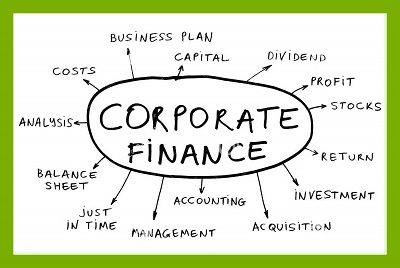Home » Online Exam Help » Finance Assignment Help » Corporate Finance Assignment Help
Corporate Finance Exam 4 Help
 Q1. Q Corp has decided to pay out an extra $1 million to shareholder, while keeping investment policy and capital structure constant. Which statement is false?
Q1. Q Corp has decided to pay out an extra $1 million to shareholder, while keeping investment policy and capital structure constant. Which statement is false?
- Q Corp must issue $1 million of stock to replace the lost cash.
- the new shareholders will demand to receive shares worth $1 million.
- the old shareholders will have reduced their stake in the firm by $1 million.
- the reduced stake that old shareholders have in the firm will more than offset the benefit of the higher dividend.
Q2. Three of the following considerations may suggest that the firm should start paying out cash to its shareholders. Which one is not a relevant consideration?
- Is the company generating positive free cash flow?
- The company is earning a high profit margin?
- Does the company have sufficient cash for emergencies and unexpected investment opportunities?
- Is the debt ratio prudent?
Q3. Stocks that are purchased on the record date are not entitled to the dividend.
- True
- False
Q4. The longer an investor waits to take capital gains, the lower is the present value of the tax liability.
- True
- False
Q5. A dividend will be paid to shareholders on Friday, May 9. To receive this dividend you must purchase the stock no later than:
- The payment date.
- The with-dividend date.
- The record date.
- The ex-dividend date.
Q6. Alternative “what if?” scenarios can be easily accommodated in financial planning by use of:
- sustainable growth models.
- planning outputs.
- spreadsheet programs.
- bond covenants.
Q7. If a firm’s sales increase by 12%, and it has no spare capacity, it must increase fixed assets by at least:
- 0%
- 6%
- 9%
- 12%
Q8. Increased needs for net working capital are:
- recognized in pro forma balance sheets.
- totally absorbed by retained earnings.
- typically financed with short-term debt.
- ignored due to their great variability.
Q9. The rate at which the assets of a firm can grow without the requirement of any external sources of financing is the:
- internal growth rate.
- sustainable growth rate.
- pro forma growth rate.
- plowback rate.
Q10. Financial plans will rarely succeed unless the forecasts are perfect.
- True
- False
Q11. An increase in current liabilities is a source of cash for the firm.
- True
- False
Q12. There are three steps to constructing a cash budget. Which of the following is not one of those steps?
- Calculate whether the firm is facing a cash shortage or surplus.
- Forecast the uses of cash.
- Set a policy for deciding how much time to give customers to pay.
- Forecast the sources of cash.
Q13. When a firm finances long-term assets with short-term sources of funding, it:
- reduces the risk of cash shortage.
- will generally have lower interest expense.
- improves the leverage ratio.
- violates the principle of matched maturities.
Q14. Issuing additional long-term debt of $5 million and buying new long-term assets worth $4 million and short-term assets of $1 million will result in a net cash flow of:
- $5 million
- $9 million
- $0 million
- $4 million
Q15. A company that pays $5,000 previously owed to one of its suppliers will see a $5,000 decrease in cash.
- True
- False
Q16. What is the cash cycle for a firm with a receivables period of 40 days, a payables period of 30 days, and an inventory period of 60 days?
- 10 days.
- 50 days.
- 70 days.
- 130 days.
Q17. The Canine Kennel uses 600 cases of dog food annually and orders 40 cases in each shipment. The annual carrying cost per case is $5 and the economic order quantity is 25 cases. Which one of these statements best applies to this situation?
- The current annual ordering costs exceed $5 per case.
- The firm needs to increase its average inventory level of dog food.
- The current annual ordering costs are less than the carrying costs.
- The firm needs to reduce the number of orders placed per year.
Q18. Which one of the following is not included in the five Cs of credit?
- Character
- Condition
- Consumption
- Capital
Q19. Potential savings from a lock-box system will be reduced by:
- the additional processing time required.
- the additional mailing time required.
- local bank charges.
- an increase in interest rates.
Q20. A firm’s inventory and accounts payable periods are 80 and 42 days, respectively. If the cash cycle is 65 days, what is the firm’s receivable period?
- 103 days
- 57 days
- 38 days
- 27 days
